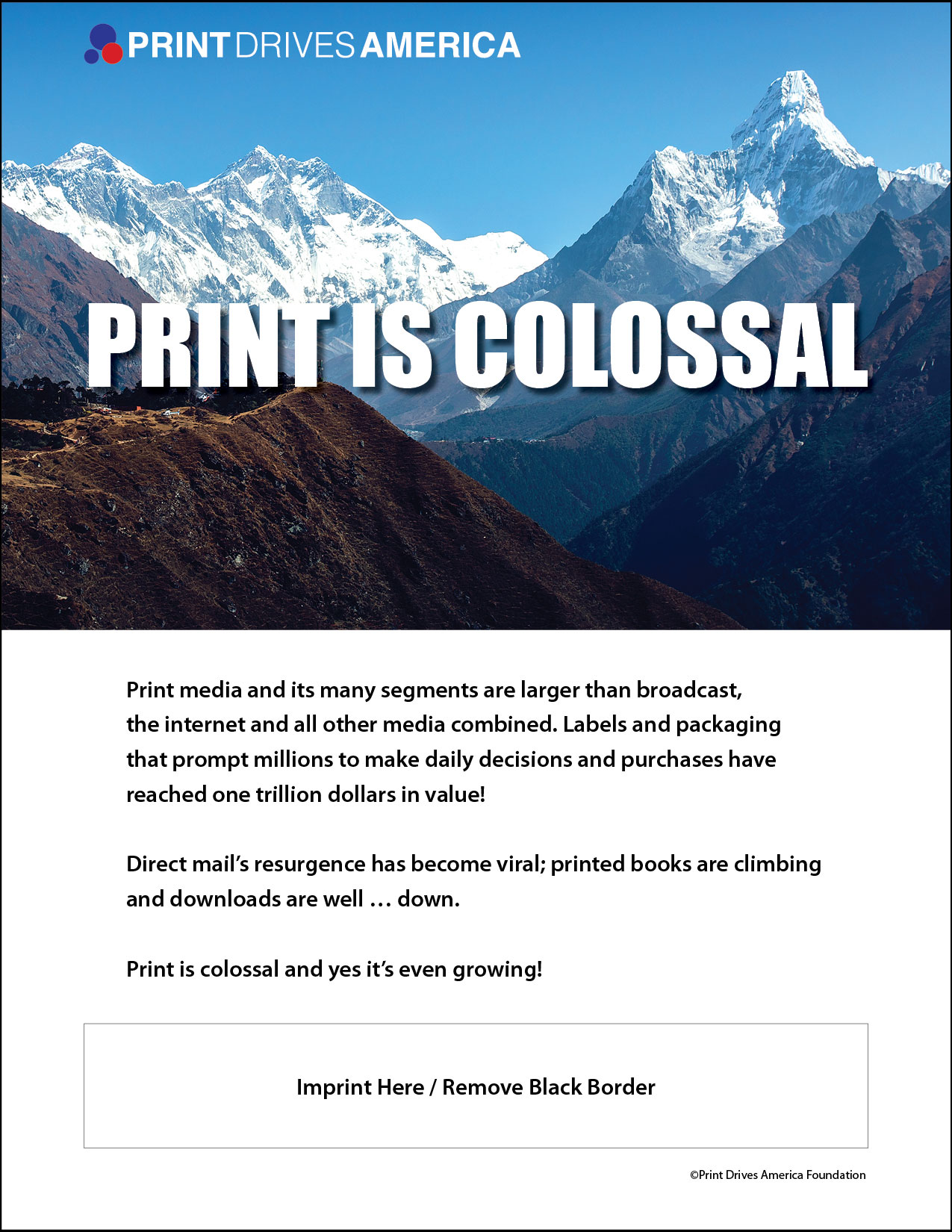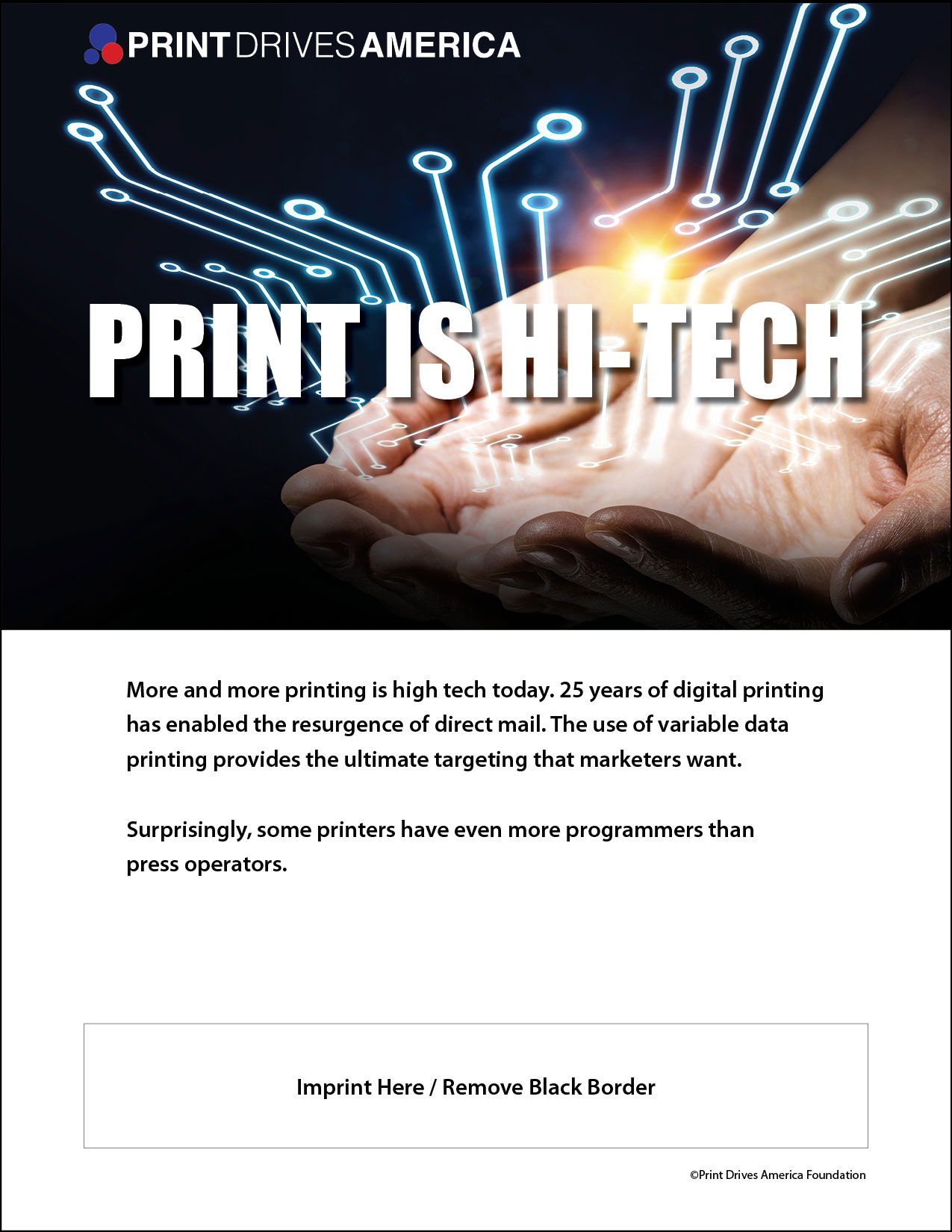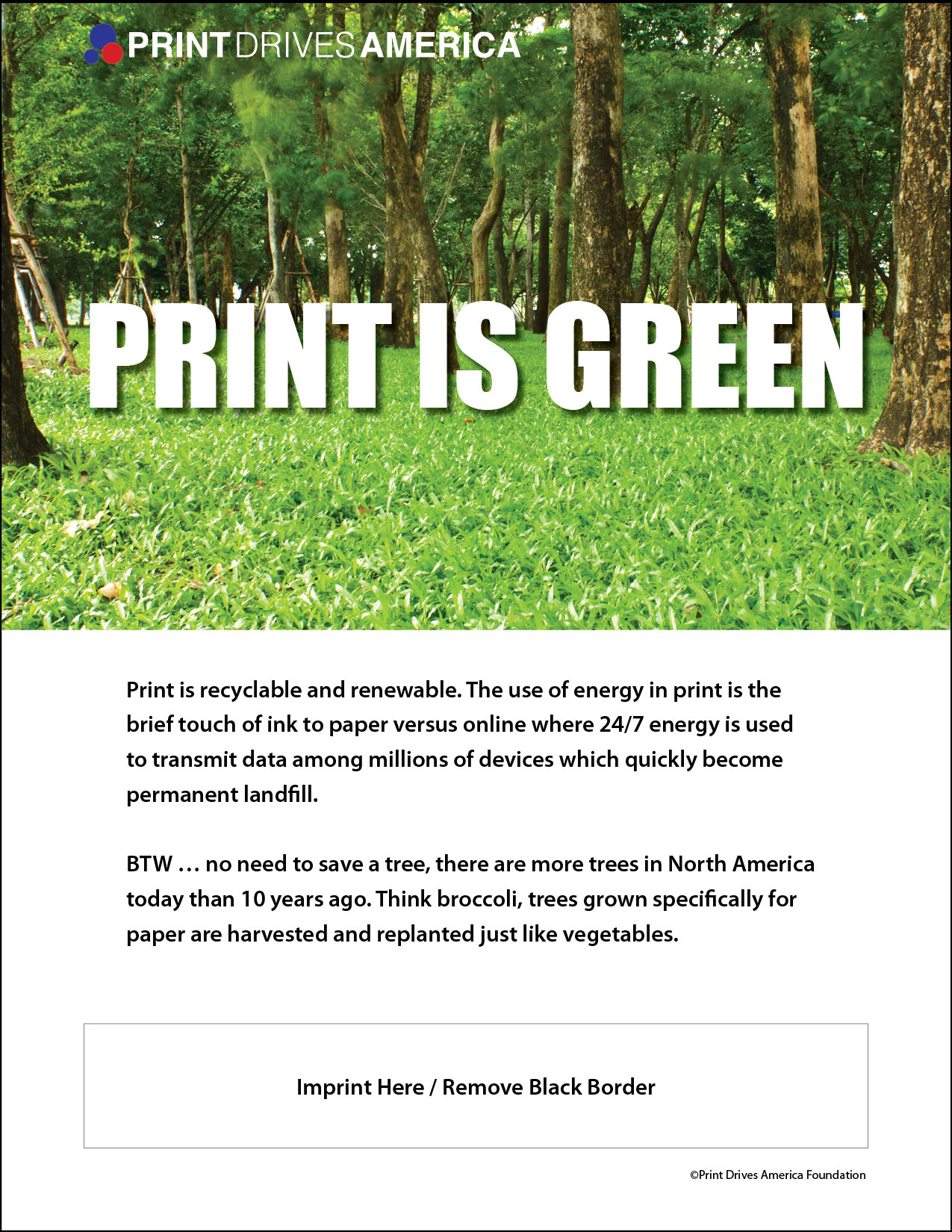More and more, as humans, we are seeing the absolute need to be more environmentally conscious both individually and as a collective society. On an individual level, we’re taking strides to use less water — turning off the foucet while brushing your teeth or doing the dishes and we’re recycling more — in the pasty 20 years the amount of recycled materials has jumped by almost twenty percent. Aside from our individual efforts, companies are constantly looking for ways to reduce waste. Today, we’re going to take a look at how both print and digital effect the environment.
There is a common misconception that print is more environmentally damaging than print — but studies and facts show not only that this is untrue, but also that digital can prove to be more hazardous than other communication methods. An article from Fineline Printing Group, “Printing Misconceptions #2; Electronic Communication is more Environmentally Friendly than Print,” shows us the following facts:
- Carbon dioxide emissions from making a CD are four times higher than from printing a 100 page, four-color annual report.
- Printing is the only medium with a one-time carbon footprint. All other media require energy every time they are viewed and booted up.
- Electronic devices often require the mining and refining of numerous minerals and metals, as well as the use of plastics, hydrocarbon solvents, and other non renewable resources.
- Adverse health effects from producing an e-reader are 70 times worse than producing books.
Finally, the article went on to discuss electronic waste or e-waste. What happens after a laptop is no longer useful or it’s time to upgrade to a new phone — where’s that old phone go?
- Worldwide 20 to 50 million metric tons of e‐waste are disposed each year.
- E‐waste is still the fastest growing municipal waste stream in the U.S.
Furthermore, digital print’s carbon footprint is minimal — it emits little to no VOCs and almost any waste created by a digital printing press can be reused in the digital printing process. Finally, while 58 percent of the harvested trees are used for energy, only 11 percent of those trees are used to create paper.
Print is not only an effective form of communication, it’s also continuously striving toward environmental excellence. Both print and digital will have their impact, it’s up to us, the users, to ensure we recycle our printed material and properly dispose of our discarded digital devices.
Timothy Freeman
President
Print & Graphic Communications Association




